My interest in exploring microscopy outside the visible spectrum using both near IR and UV also extends to conventional photography. I tried home modifying an ageing, near worthless Sony S75 3 Mp camera some years ago for monochrome near IR studies by replacing the sensor
NIR filter with a clear glass optical grade plate of the same thickness and was surprised to find that it worked perfectly. To date I have mainly adopted the sunny day type of IR studies where reflectance of plants are at their greatest and blue skies turn very dark; some books remark that the middle of the day is very suitable for IR work, the time conventional photography tends to be less successful because of the harsher lighting.
This approach does give the traditional 'IR look' to the scenery, very pale foliage and generally high contrast imagery. The image below is typical taken in late summer. A look that does appeal to me for the appropriate subject but it is distinctly an infrared image with the 'other worldly' look presenting a snow-like scene to landscapes. To the extent that on duller
days and as winter approaches I have not really considered IR photography but reading a photo essay
by one of the world's leading infrared photographers has prompted me to widen that traditional narrow approach.
(Technical Note. A Hoya 720 nm filter was used for all images. Its transmittance band just starts in the visible and gives shorter exposures especially useful in winter. Taking a manual white balance off green grass in bright sun can remove the pink tone. The longer wavelength filters narrow the spectrum requiring longer exposures. The colour setting was retained in the camera and for post-processing
to retain the sepia tint often presented for skies. Using shorter wavelength filters such as 650 nm give the colour infrared imagery. I'm not keen on the look of many of those images with an often rather unnatural colour palette.)
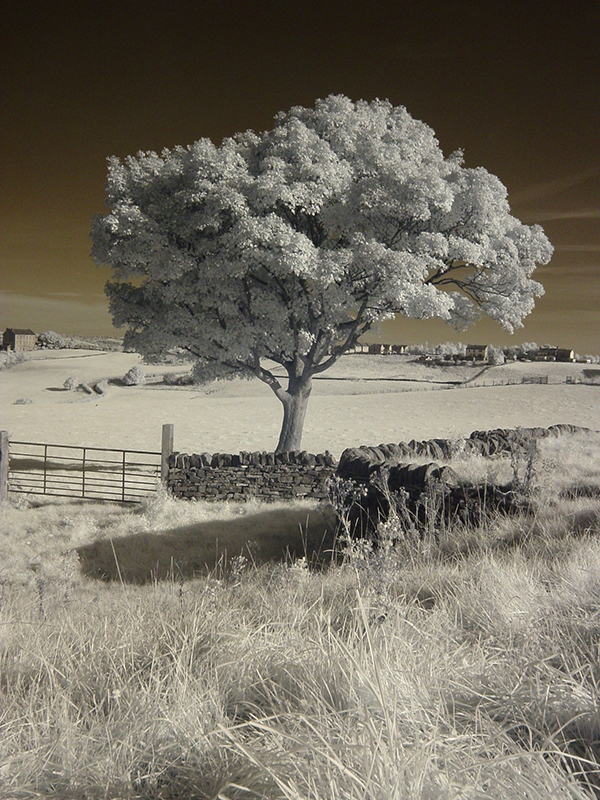
Old Lindley Moor looking across to Blackley chapel (far left of image) and a new housing estate where a brickworks formerly stood. Late summer with almost clear blue skies.
In Black+White Photography magazine issue no. 258 (Nov. '21) in their 'Technique TRY...' series there was a photo essay by Paul Gallagher entitled 'Working in Another Light'. The author is a noted British professional photographer who has published widely and also gives courses including on infrared work. The sub-title described the use of infrared but the
striking imagery did not have that traditional 'IR look'. Intrigued I read the essay. Rather than attempt to paraphrase the key aspects of an eloquent
article the interested can read the essay via the modestly priced back number on the Pocketmags website. I also bought his excellent eBook 'In Another Light' available on the Aspects of Expression website. In essence he describes making use of a 'quieter light' in infrared work and to explore its use on what appear to
be unpromising
days for traditional IR. Infrared becomes more a useful modifier for more traditional looking monochrome
imagery such as the bringing out of sky detail and subtleties of foliage and texture.
His work inspired me to explore the local scenery in all types of weather and at the time of writing in early December when what sunshine there is can be weaker and at a lower angle. The comparisons and examples below do not aspire to be excellent imagery but hopefully do show the subtler effects of infrared in the weaker light conditions.
December 2021 images in weak sunshine and/or shade.
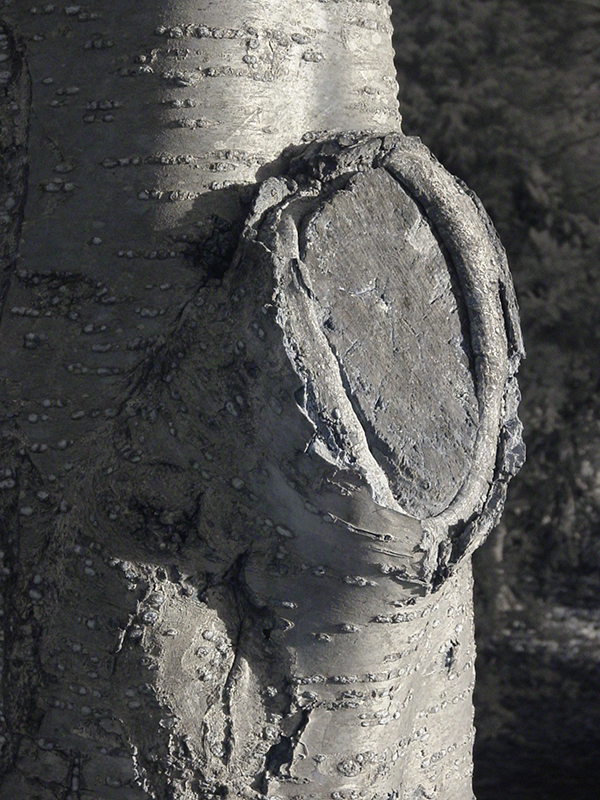
Tree trunk detail, Kirkwood Drive park, weak winter sunshine. This small park and lake is just around the corner from
my home. There is little green on the trunk apart from some algae to reflect IR but does bring out the subtle tones that normal monochrome may struggle with.
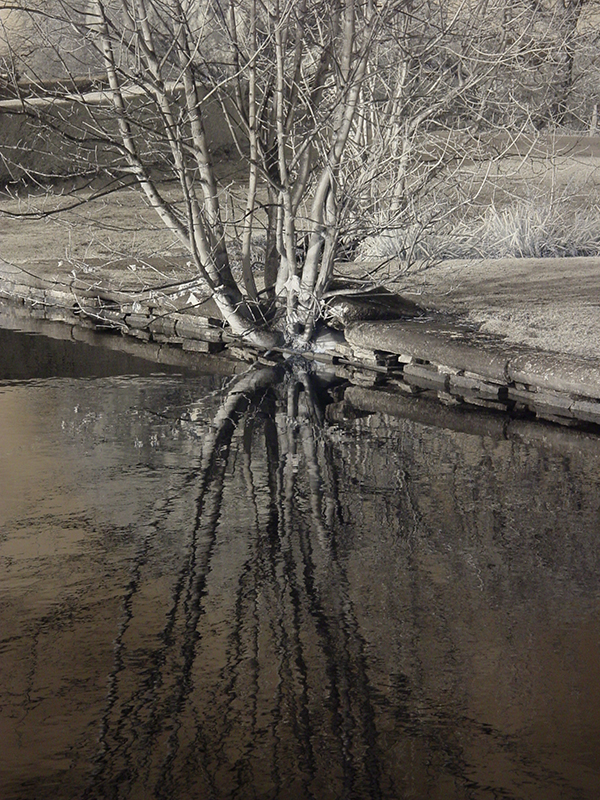
Kirkwood Drive pond, weak winter sunshine. Blue skies often give a sepia tint in IR and this can be seen in the water reflections. The tree is leafless but the green water plants behind provide some lighter tones.
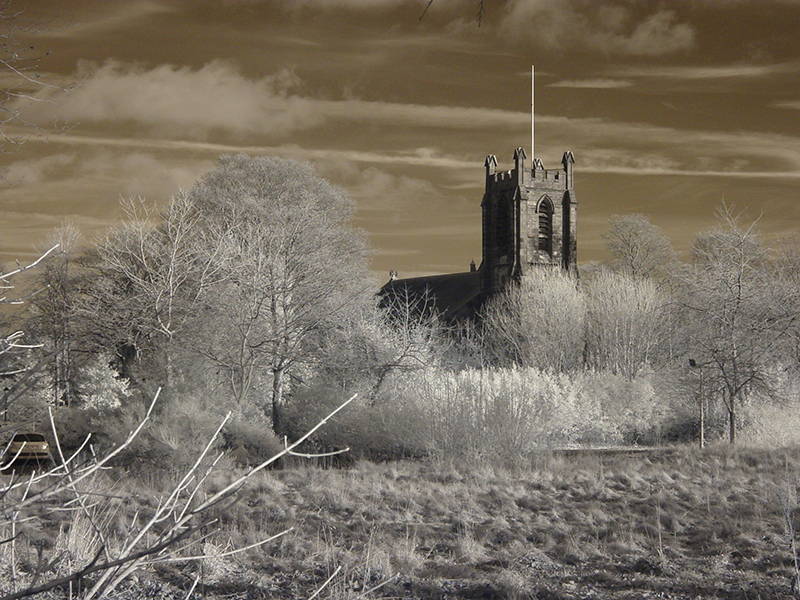
St. Stephen's church, Lindley, Huddersfield in weak afternoon December sunshine.
Lindley is a village forming part of the larger town of Huddersfield about ten minutes walk from my home. This view is deceptive as the church nestles in a dense urban area being just off the high street but this view is from the south looking across a small wilder area. The tonal balance out of the camera was well spread and unmodified. In summer with the sun higher in the sky the flora in leaf would
have given the very paler tones of IR. In winter the dried grasses and leafless trees tones are muted for a more natural look with just the middle distance possibly evergreen foliage giving some lighter tones and contrast to the image. The milky sky has also not gone the very dark seen typically for summer clear blue skies but the IR does bring out the subtle tones and a pleasing sepia tint.
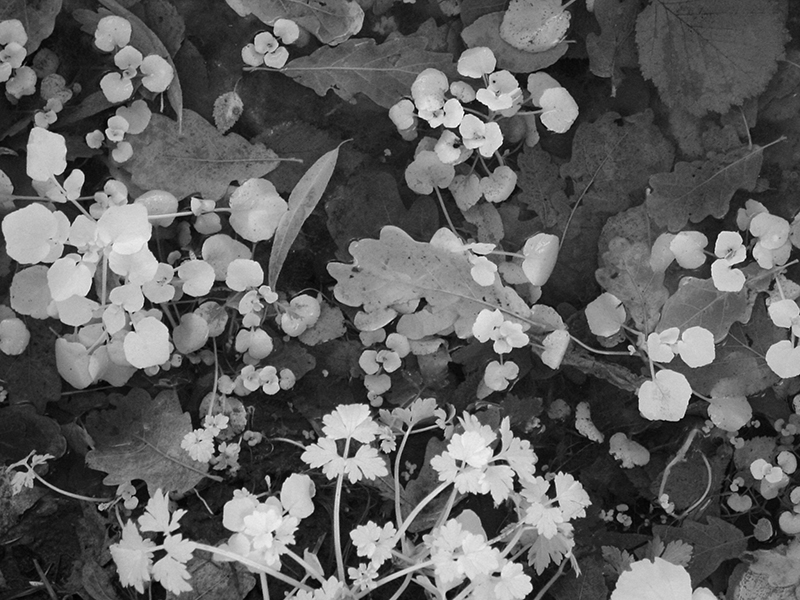
Valley urban wilderness pond off Briarlyn Road, Huddersfield. The striking cover photo on Paul Gallagher's eBook is of foliage in a stream. I had never considered this as an IR subject and tried it for a tiny pond in a deep valley out of the sun on a winter's day. The floating plants were fresh so despite the lack of direct sun give a lighter tone in contrast to the decaying leaves below the surface. This
was converted to greyscale as the slight sepia tones were less suited.
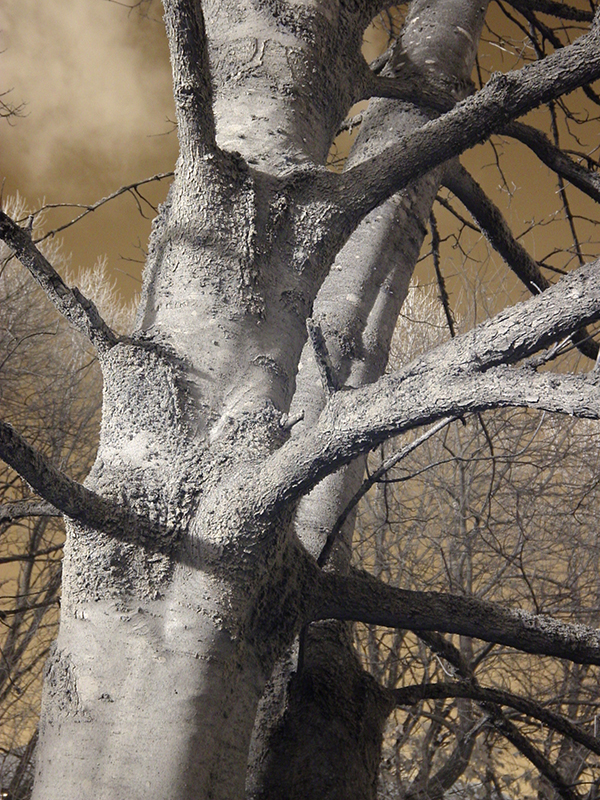
Valley urban wilderness pond off Briarlyn Road, Huddersfield. The low angle wintry sun brought out the subtle textures on the trunk against a now sepia milky blue sky. As Paul Gallagher notes in his essay and eBook, out of the camera images in a weaker light can be flat and require some work, although in these examples just the tonal balance curve at extremes only needed adjusting.
Comments to the author David Walker are welcomed.
Acknowledgement. Thank you to Paul Gallagher for sharing his work and techniques which prompted me to explore infrared photography with an unfamiliar approach.
Please report any Web problems or offer general comments to
the
Micscape
Editor
.





